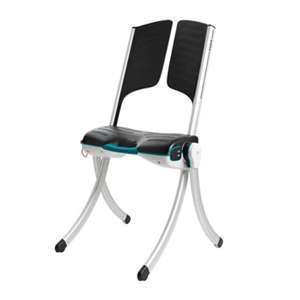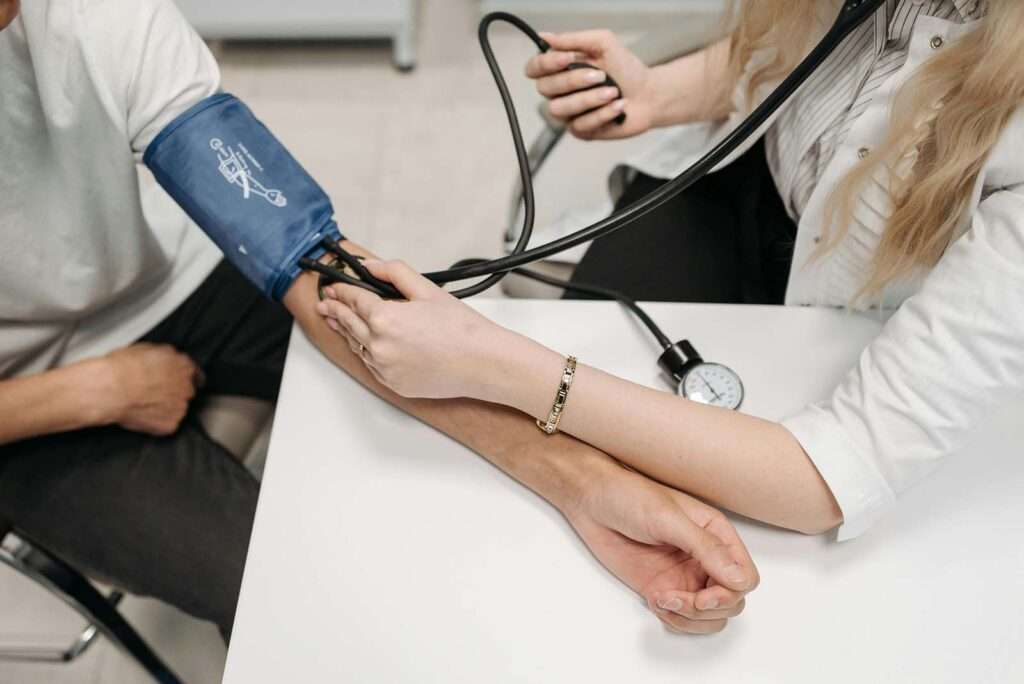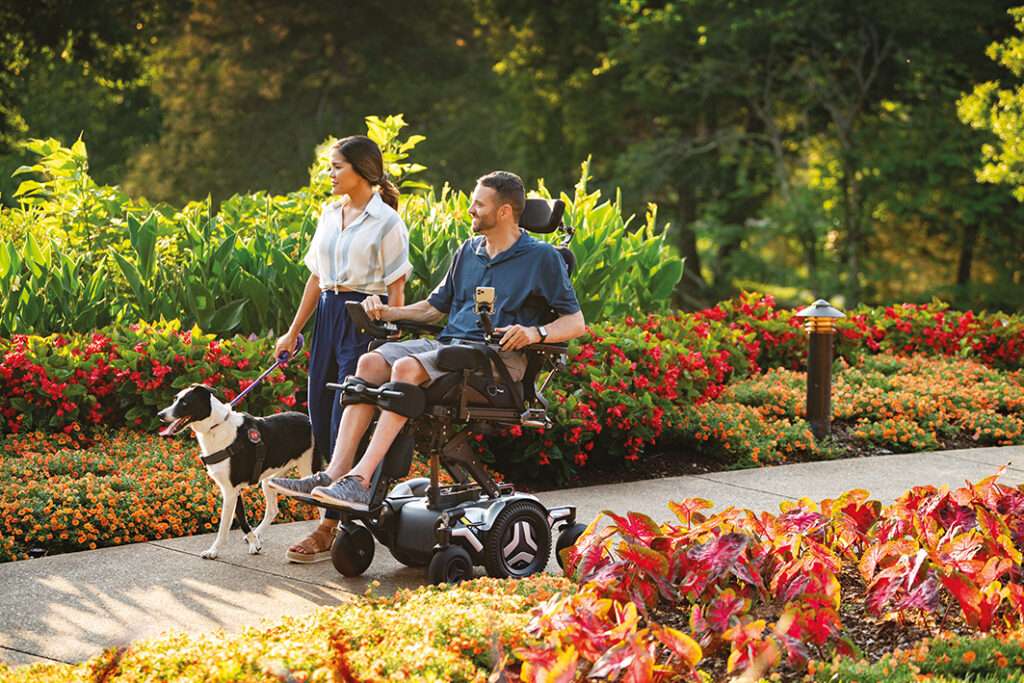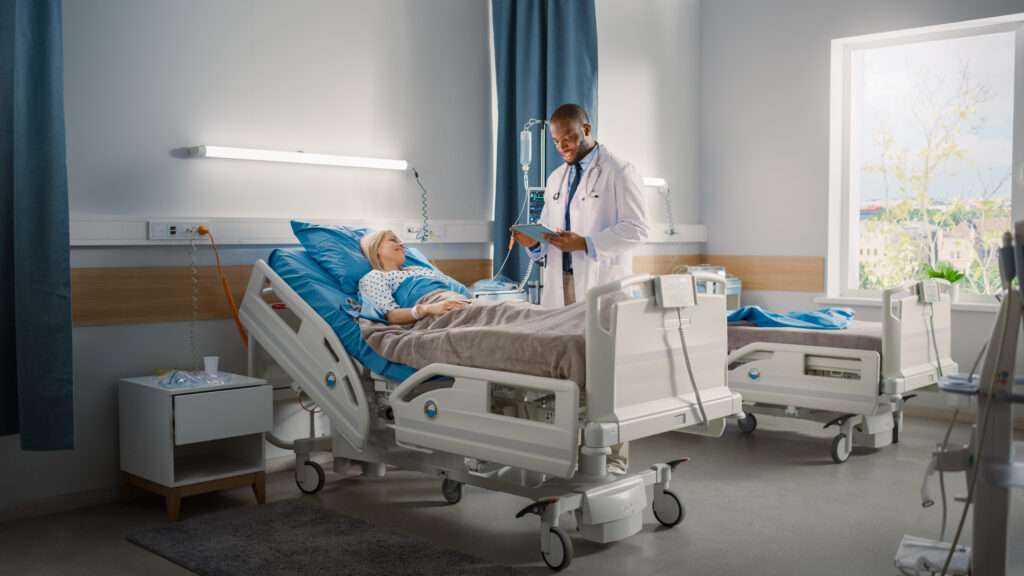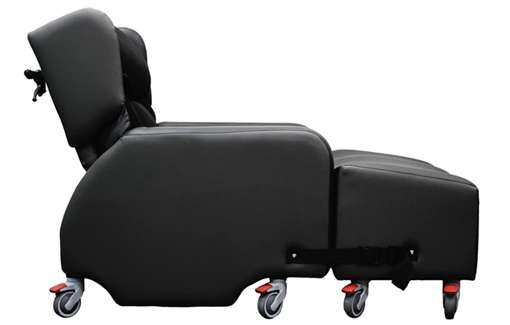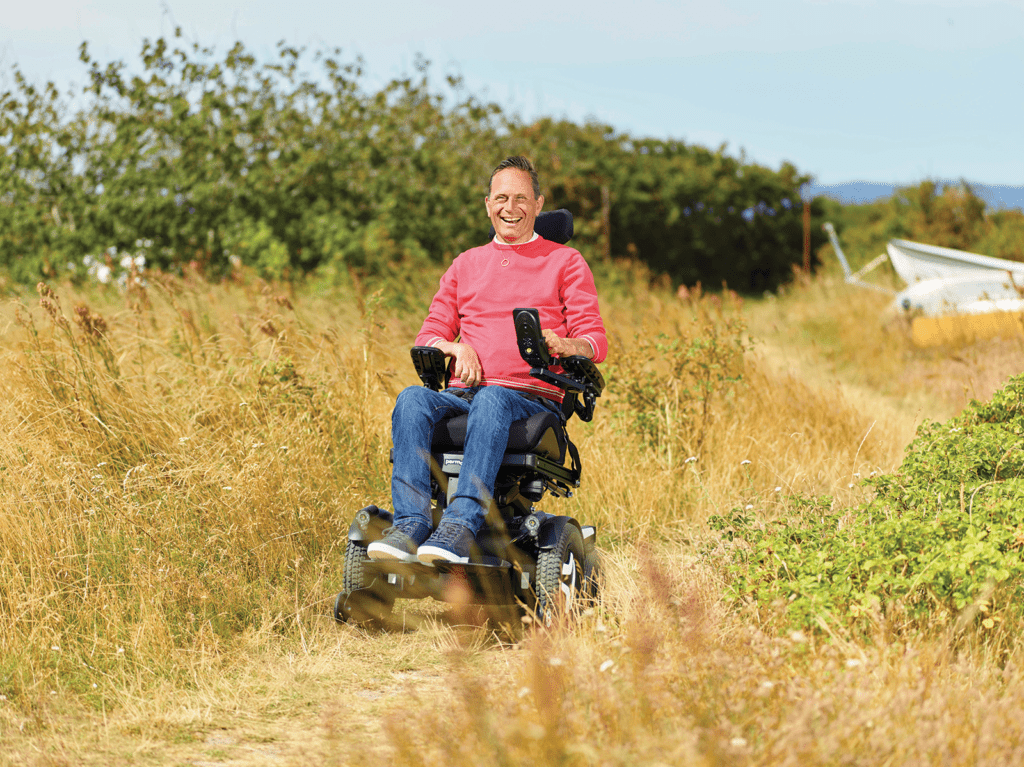As care in the community is becoming ever more critical to reduce pressure on A&E and hospital admissions, the subject of falls at home is brought more sharply into focus.
Elderly and less mobile people living at home are especially vulnerable in the event of a fall and need external support, whether this be from family members, friends, homecare services or first responders.
These support groups need the right lifting equipment at their disposal to provide a fast, effective response in the event of a fall, lifting the patient in a safe, hassle-free way and preventing the detrimental impact of a ‘long lie’.
A ‘long lie’ occurs when the faller is unattended for more than an hour, which can exacerbate any injury sustained by the fall and lead to further health complications such as pressure sores and respiratory problems.
Here we compare different lifting aids available on the market to help carers and support groups attend to falls at home.
Jump straight to...
The Raizer Lifting Chair
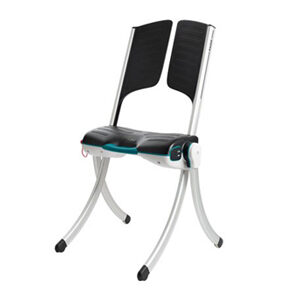
The Raizer 2 Lifting Chair is a motorised lifting chair that fits together around the fallen patient and performs a 60-second lift. It is powered by a lithium battery and can be purchased with extras such as a headrest or lapbelt.
How It Works
The Raizer fits together by inserting the leg and backrest sections into the central motor unit, which slides underneath the patient’s legs. The lift works by rotating the wheeled back legs downwards, which cantilevers the patient into a sitting position.
Watch the video below to see how it works.
Pros
- Single-user operation – only requires one person to operate, so no formal manual handling training is required.
- Quick deployment – builds and dismantles within seconds, and performs a 60-second lift.
- No manual handling required — this minimises the risk of injury for carer and patient.
- High number of lifts — the Raizer is able to do 70 lifts from a full charge. The battery keeps its charge between lifts.
- Lightweight and portable — the parts stow away into two carry cases which are easy to transport, or load onto a trolley for longer distances.
- Compact — ideal for smaller, more confined spaces within the home
Cons
- Weight limit – with a 23 stone (150kg) weight limit the Raizer is unsuitable for bariatric patients.
- Space — an extra 35cm of width is needed on each side of the patient to insert the back and legrest sections
- Entrapment risk – there is a slight risk of entrapment when the lift starts, although neglible.
Mobile Hoist
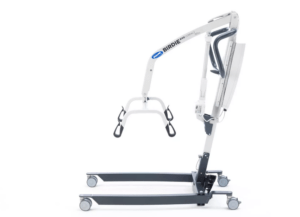
How It Works
To use a mobile hoist, the first step is to ensure it is set up properly and in the right position. Once the person is in position in the sling, the hoist can be operated to lift them off the ground and transfer them to a bed or chair.
- Place the patient’s arm across their chest.
- Ask them to bend their legs upwards
- Ask them to face in the direction they need to move and gently roll them towards you onto their side
- Apply the sling on one side of their body, gently assisting the bottom edge of the sling underneath them, then roll them carefully back into a lying position.
- Check the sling is fitting correctly, with an equal area of material on the left and right from the tail bone to top of the shoulders (or head if sling has a head support).
- If the sling has leg straps, feed the straps through the persons’ legs (or if you are using a looped sling, feed one leg strap through the other)
- Position the bed or chair that you are transferring the patient onto.
- Lower the hoist over the patient at an angle, with one hoist leg under the thighs and the other alongside the patient’s head.
- Attach the sling to the hoist with the loops, carefully selecting the loops so that the patient isn’t pulled along the floor when the hoist lifts.
- Slowing lift the patient from the floor, and support their head. If they are being transferred onto a bed, place a slide sheet underneath their heels to prevent any friction on the skin when lowering them onto the bed.
- When they have been lowered into the bed or chair, they can be repositioned by using different sling loops to adjust their position.
Pros
- Safety – mobile hoists have safety as a prime consideration, with different safety features to prevent accidents and injuries.
- Minimised risk — the correct moving and handling protocols need to be observed by trained carers, minimizing the risk of injury to patient and carer.
- Ideal for less mobile patients — used primarily to move patients with restricted mobility or who are unable to weight-bear
- Assists transfers – allows individuals to be lifted and transferred in one go, rather than lifted and transferred in two separate instances.
Cons
- Training required — the specific training required may prevent friends and family from being able to assist
- Resource – at least two carers are required to operate the hoist
- Space – mobile hoists require extra room to manoeuvre and lift the patient
- Time-consuming – using a mobile hoist lift can be a more labour-intensive, time-consuming process than other lifts.
Raizer M
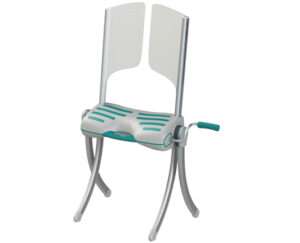
The Raizer M works in the same way as the Raizer 2, except it is operated by a manual crank handle instead of a motor, removing the need for batteries.
Pros
- Single-user operation — easy to set up and dismantle and only requires one person to operate. No manual handling training required.
- No batteries — there is no electric motor so no charging or electronics are required, simplifying its use
- No manual handling involved — the chair fits together around the patient and gives them a supported lift, removing the need for manual handling.
- Silent lift — there is no motor noise, creating a calm, quiet environment for the patient.
- Lightweight and portable — the parts stow away into two separate carry cases
Cons
- Weight limit — with a 23 stone (150kg) weight limit the Raizer M is not suitable for bariatric patients.
- Slower lift — the manual lift takes longer to operate than the Raizer 2
- Entrapment risk — there is a small risk of entrapment at the beginning of the lift, although this is rather remote. Keep clothing and pets away from the Raizer when operating the lift.
Mangar Elk Lifting Cushion
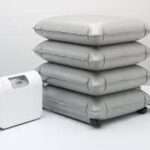
The Elk is a compact lifting cushion that inflates underneath the patient and lifts them to a sitting position.
Pros
- Single-user lift — with only one carer required, the Elk frees up staff resource
- Reduces shear friction — the surface of the cushion spreads the patient’s weight more evenly, reducing the risk of shear friction.
- Robust material — the cushion material is very robust so can be used outside if required
- Compact and lightweight — the equipment is lightweight allowing it to be transported easily.
- 70 stone weight limit — easily accommodates bariatric patients
Cons
- No back support — there are no side or back supports to support the patient while they are being lifted.
- Less supportive — as a result, if the patient has weak core strength they may feel unbalanced during the lift. It may be difficult to get the patient into a sitting position on the cushion before the lift begins, particularly if they have fallen in a confined area.
- More manual handling — the operator has to support the patient whilst operating the lift, making it more difficult for them
- Slower lift — the duration of the lift is 3 minutes
- Low number of lifts — the Elk can only do 8 lifts on a single charge
Mangar Eagle Lifting Cushion
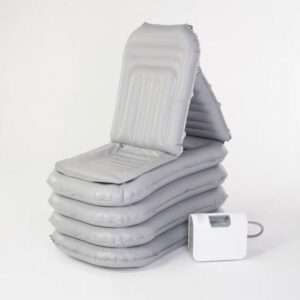
The Mangar Eagle inflates in the same way as the Elk but has an additional backrest that inflates during the lift and assists the patient into a sitting position.
Pros
- Single user lift — a one-person operation
- Supportive — the inflatable backrest supports the patient’s back, neck and shoulders
- Reduces shear friction — the stretchy material of the cushion minimises pressure on the patient’s skin
- Robust material — the cushion is made from material similar to that used on lifeboats
Cons
- Slower lift — the entire lift takes 3 minutes
- Low number of lifts — only carries out 6 lifts on a full battery
- Patient transfer required — the patient has to be transferred onto the cushion before the lift can take place, increasing the risk of strain to the caregiver
Mangar Camel Lifting Cushion
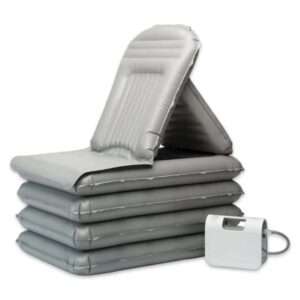
The Camel inflates from underneath the patient and has a backrest that helps the patient into a sitting position.
Pros
- Single-handed lift — only one carer needs to operate
- Lifts from lying position — the cushion lifts the patient from a lying position into a recumbent position
- 50 stone weight limit —ideal for bariatric patients
Cons
- Time-consuming to operate — due to the number of different sections and cables, the cushion is more complex to use and needs more space, all increasing the risk of user error
- Low number of lifts — the Camel does 4 lifts on a single charge
- Slower lift — the lift lasts 3 minutes but is not a continuous lift as each cushion inflates separately. The patient needs to be positioned centrally on the cushion so they don’t lean to one side.
- Patient transfer — the patient needs to be transferred, which may need a slide sheet if they are lying on the floor.
Our Verdict
Raizer (2 and M)
It’s speed and practicality make it ideal for high call volumes, and it is compact and lightweight so easy to carry up and down stairs and in between visits. The high number of lifts per charge makes it ideal for carers out and about in the community.
Elk / Eagle
Their robust construction makes them suitable for use inside or outside the home, so useful if someone has fallen in their garden. However, their slower operation makes them more time-consuming, slowing first responders down during busy periods.
Camel
The Camel is more suitable for plus-size patients with its higher weight limit. It is more cumbersome to operate then the Elk or Eagle, reducing its practicality.
Mobile Hoist
A mobile hoist requires staff with sufficient qualification in manual handling to operate, and is a more involved process. It is harder to transport and carry in and out of properties, making it less suitable for community response.
In our assessment, the Raizer is the most suitable piece of equipment overall for assisting people who have fallen at home.
Find out More About the Raizer





